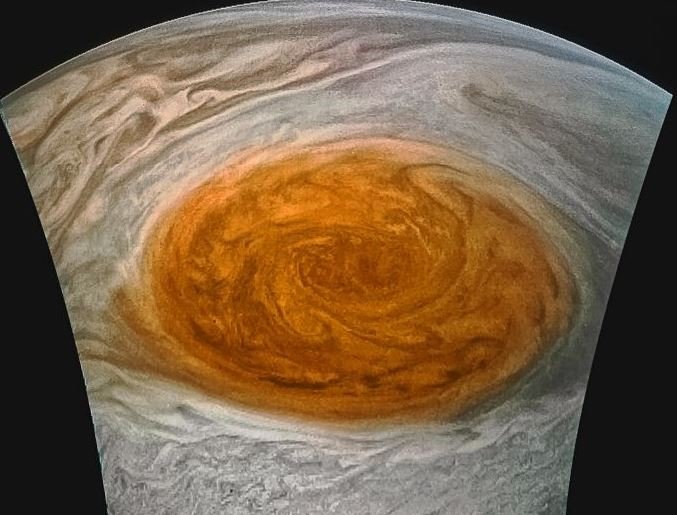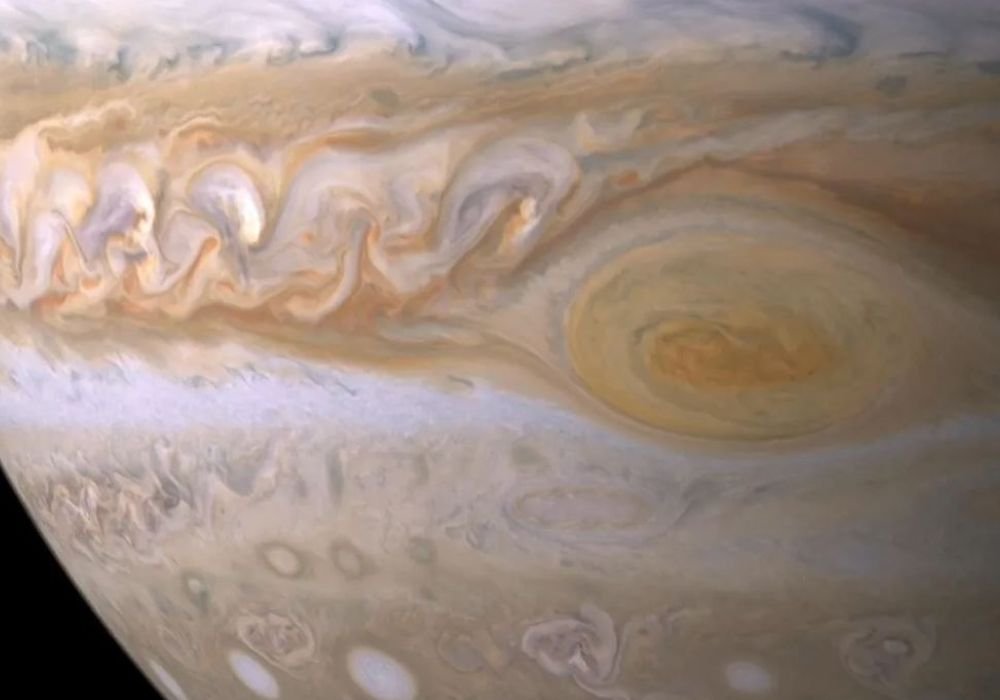There are storms and hurricanes around the world that record winds of up to 200 miles per hour, which can destroy homes and cities. But still, these natural terrestrial events are nowhere near what happens at a particular point on Jupiter’s surface: Known as the Great Red Spot, this storm is a massive storm that recorded winds of approximately 400 miles per hour.
According to information from the United States National Aeronautics and Space Administration (NASA), the storm has been active on the surface of Jupiter for at least 150 years, but perhaps it has a much longer period than we expected. There are records that it was The first astronomers began observing the storm in the mid-1600sBut there is no way to identify whether this is truly the Great Red Spot.
Over the past few years, hundreds of scientists have begun to study more about the natural phenomenon on Jupiter, but they explain that it has not been an easy journey. Researchers had difficulty understanding the spot better because it is a planet a thousand times larger than Earth and consists mostly of gases.
To try to explain Jupiter’s Great Red Spot a little better, TecMundo gathered information from scientists and experts in the field. Check out!
What is Jupiter’s Great Red Spot?
The Great Red Spot is the opposite of hurricanes on Earth, as it rotates in the opposite direction around the center of high atmospheric pressure. As a planet with a liquid hydrogen ocean at its core, Jupiter’s atmosphere is filled with hydrogen and helium; These and other conditions make scientists’ jobs difficult as they need to study the impact of all these extreme weather conditions.
The anticyclonic storm rotates counterclockwise every six days and is located in Jupiter’s southern hemisphere. and so far this Considered the largest in the entire Solar System. On Earth, it is common for these anticlonic storms to develop when atmospheric pressure is high and ‘forces’ cold air to move to lower altitudes, but Jupiter does not work in the same way.
Despite the large differences, Amy Simon, a planetary atmosphere expert at NASA’s Goddard Space Flight Center, explains that studying Jupiter’s climate can help better understand Earth’s climate system; after all, both planets operate under the same physics concepts. Better knowledge on the subject could also advance studies of other regions of the Solar System.
“If you just look at the light reflected from an extrasolar planet, you can’t tell what it’s made of. “Observing as many different situations as possible in our own solar system could allow us to apply this knowledge to extrasolar planets,” Simon said in an official NASA release.
Scientists have some guesses, but they don’t know for sure why the storm lasted so long. One possibility is that the Great Red Spot is trapped between opposing currents that keep it spinning; Another hypothesis is that high and low temperatures inside the storm force it to remain active. Researchers explain Since Jupiter is a gaseous planet, its longevity may be explained by the lack of a solid surface to dampen the storm..
The Great Red Spot is shrinking
Currently, the Great Red Spot is 16,300 kilometers wide, approximately 1.3 times the width of our planet. But scientists have noticed that getting smaller over the years; for example, at the end of the 19th century astronomers estimated it to be 48,200 kilometers wide. Unfortunately, researchers still do not know the reason for this shrinkage, but they did notice some levels of growth in the mid-1920s.
Other observations show that it has undergone changes in its color and shape, among other features. Therefore, scientists are still looking for answers to all these questions: They don’t know how long the storm might last before it disappears on Jupiter.
Currently, some studies suggest that the gas planet’s upper atmosphere consists of clouds of ammonia, ammonium hydrosulfide, and water, but these elements represent only a small fraction of it. NASA explains that there are studies to investigate whether cosmic rays coming from the region may be responsible for reaching Jupiter’s clouds and changing the ammonium hydrosulfide in the atmosphere. This may explain the reddish color of the spot.

“We’re talking about something that makes up only a small fraction of the atmosphere. This is what makes it so difficult to understand exactly what creates the colors we see. Ideally, you want a mixture of the right components of everything you see in Jupiter’s atmosphere, at the right temperature, and then irradiating it at the right levels. What we’re trying to do is design more realistic laboratory experiments for Jupiter’s atmosphere,” Simon said.
next to you Great Red Spot, scientists claim Little Red Spot formed in the early 2000s of three oval-shaped white storms. They also found that the gases above the storm were hotter than other regions on the planet; perhaps due to acoustic waves developed by the storm’s turbulence.
Did you like the content? Stay up to date with more astronomy curiosities at TecMundo. If you wish, also take a look at the amateur astronomers who recorded rock collisions with Jupiter.
Source: Tec Mundo
I’m Blaine Morgan, an experienced journalist and writer with over 8 years of experience in the tech industry. My expertise lies in writing about technology news and trends, covering everything from cutting-edge gadgets to emerging software developments. I’ve written for several leading publications including Gadget Onus where I am an author.











